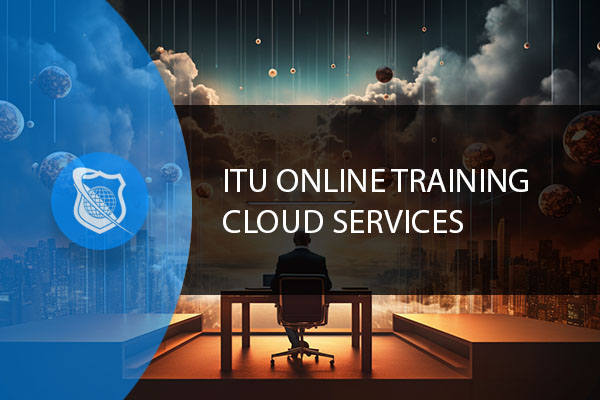What Is 5G?
5G stands for the fifth generation of cellular network technology, providing faster speeds, lower latency, and more reliable connections on mobile devices and other 5G-enabled technologies compared to its predecessor,

The combination of CASB and PAM represents a formidable approach to securing cloud environments. Cloud computing has revolutionized the way businesses operate, offering scalability, efficiency, and cost savings. However, it also introduces new security challenges. The complexity of cloud environments demands robust security measures, and this is where Cloud Access Security Brokers (CASB) and Privileged Access Management (PAM) come into play.
CASBs act as gatekeepers between cloud users and cloud services, ensuring secure and compliant use of cloud applications. For instance, Okta’s CASB solutions offer comprehensive visibility into cloud usage, assess security risks, and enforce security policies. A real-world example is how a financial services firm used Okta’s CASB to monitor and regulate access to cloud applications, ensuring compliance with industry regulations and protecting sensitive financial data.
Cloud Access Security Brokers (CASBs) have become an indispensable component in the cloud security landscape, serving as a critical bridge between organizations and their use of cloud services. Let’s delve deeper into the role of CASBs and examine some illustrative examples.
Role of CASBs
Examples of CASBs in Action
These examples highlight how CASBs are instrumental in providing robust security and compliance solutions in diverse cloud environments. By addressing the unique challenges of cloud computing, CASBs enable organizations to leverage the benefits of cloud technologies while mitigating associated risks.

Propel your career forward and be part of an essential member of any management team as an Information Security Manager. This advanced training series is designed specifically for those want to move up into a management position in the IT field.
PAM focuses on managing and securing privileged accounts, which are prime targets for cyber attacks due to their elevated access rights. A case study highlighting PAM’s importance is how a healthcare organization implemented CyberArk’s PAM solutions. This move enabled them to monitor privileged user activities, detect potential threats in real-time, and prevent unauthorized access to sensitive patient data.
Privileged Access Management (PAM) is a cornerstone of cloud security, primarily focusing on managing and securing the access rights of privileged users. Let’s explore its significance and how it fortifies cloud security.
Key Aspects of PAM in Cloud Security
Examples and Case Studies
The significance of PAM in cloud security cannot be overstated. It provides a critical line of defense against both internal and external threats, ensuring that the most sensitive and high-risk access points within an organization’s IT infrastructure are well-protected. By implementing robust PAM strategies, organizations can significantly enhance their overall security posture, particularly as they navigate the complex and ever-evolving landscape of cloud computing.
Cloud Access Security Brokers (CASBs) have become pivotal in safeguarding cloud environments. Their deployment can significantly enhance an organization’s security posture. Let’s delve into the deployment aspects and the multifaceted benefits they bring.
Deployment of CASBs
Benefits of CASB Deployment
Real-World Examples
The deployment of CASBs offers a comprehensive approach to cloud security, addressing a range of concerns from data protection to regulatory compliance. By integrating a CASB into their cloud security strategy, organizations can significantly enhance their ability to protect their cloud-based assets while gaining a deeper understanding and control over their cloud usage.

At ITU, we offer an exclusive Cloud Computing training series designed to prepare you for certification and/or to help you gain knowlege of all Cloud based platforms including AWS, Azure and Gooogle Cloud.
Get access to this exclusive Cloud Computing Training today.
Privileged Access Management (PAM) is a fundamental aspect of cybersecurity, particularly in protecting against cyber threats. Its critical role is underscored by the sensitivity of the assets it safeguards. Let’s explore this role in more detail.
Key Functions of PAM in Cybersecurity
PAM in Preventing Cyber Threats: Examples and Case Studies
PAM plays a pivotal role in preventing cyber threats by managing and securing privileged access, which is often a target for attackers. Through comprehensive control and monitoring of privileged accounts, organizations can significantly mitigate risks associated with cyber threats, ensuring the security and integrity of their critical systems and sensitive data.
In the realm of cloud security, integrating Cloud Access Security Brokers (CASBs) and Privileged Access Management (PAM) systems represents a holistic approach to safeguarding digital assets. This integration not only enhances security postures but also ensures a more comprehensive defense against a wide range of cyber threats. Let’s explore this integrated approach in more detail.
Synergizing CASB and PAM
Real-World Scenarios of Integration
Integrating CASB and PAM solutions offers a holistic approach to security, effectively addressing both the horizontal expanse of cloud applications and the vertical depth of privileged access control. This integration not only fortifies defenses against a variety of threats but also streamlines management and enhances the overall cybersecurity posture of an organization.

Your career in information technology last for years. Technology changes rapidly. An ITU Online IT Training subscription offers you flexible and affordable IT training. With our IT training at your fingertips, your career opportunities are never ending as you grow your skills.
Plus, start today and get 30 days for only $1.00 with no obligation. Cancel anytime.
As cloud adoption continues to grow, understanding and implementing these solutions is critical for any organization looking to protect its data and resources in the cloud. This dual approach not only enhances security postures but also ensures regulatory compliance, making it a cornerstone in the strategy for modern cloud security.
Understanding key terms in the realm of cloud security, specifically focusing on Cloud Access Security Brokers (CASB) and Privileged Access Management (PAM), is crucial for professionals navigating this complex and evolving field. These terms form the foundational language for discussing, implementing, and managing effective cloud security strategies. Knowledge of these terms not only aids in better comprehension of the subject but also facilitates more informed decision-making and policy-setting in organizational cybersecurity.
| Term | Definition |
|---|---|
| CASB (Cloud Access Security Broker) | A security policy enforcement point placed between cloud service consumers and providers to enforce enterprise security policies. |
| PAM (Privileged Access Management) | A cybersecurity strategy focused on controlling access to critical systems and resources within an IT environment. |
| Cloud Computing | The delivery of different services through the Internet, including data storage, servers, databases, networking, and software. |
| Data Security | The practice of protecting digital information from unauthorized access, corruption, or theft throughout its lifecycle. |
| Threat Protection | Measures taken to protect against malicious activity or potential damage in a network or system. |
| Identity and Access Management (IAM) | Frameworks and solutions for managing digital identities and controlling user access to resources. |
| GDPR (General Data Protection Regulation) | A regulation in EU law on data protection and privacy in the European Union and the European Economic Area. |
| HIPAA (Health Insurance Portability and Accountability Act) | U.S. legislation that provides data privacy and security provisions for safeguarding medical information. |
| Compliance | Adhering to laws, regulations, policies, and specifications relevant to an organization or industry. |
| Data Encryption | The process of converting data into a code to prevent unauthorized access. |
| Tokenization | The process of substituting sensitive data with non-sensitive equivalents, known as tokens, which have no extrinsic or exploitable value. |
| API (Application Programming Interface) | A set of rules that allow different software entities to communicate with each other. |
| Data Loss Prevention (DLP) | A strategy for ensuring that end users do not send sensitive or critical information outside the corporate network. |
| Multi-factor Authentication | A security system that requires more than one method of authentication from independent categories of credentials. |
| Session Recording | Capturing the screen and user activity during a session for audit or educational purposes. |
| Threat Detection | The practice of analyzing the security of a computer or network to identify any breaches or threats. |
| Cloud Applications | Software programs where cloud-based and local components work together. |
| Regulatory Compliance | The goal that organizations aspire to achieve in their efforts to ensure that they are aware of and take steps to comply with relevant laws, policies, and regulations. |
| Shadow IT | Information technology projects managed outside of, and without the knowledge of, the IT department. |
| User Behavior Analytics (UBA) | A cybersecurity process about detecting insider threats, targeted attacks, and financial fraud. |
This comprehensive list of terms provides a fundamental understanding of key concepts in cloud security, specifically in the context of CASB and PAM, which are critical in managing and securing cloud environments.
A CASB is a security policy enforcement point that sits between cloud service consumers and cloud service providers to enforce enterprise security policies when accessing cloud-based resources. CASBs help in providing visibility, compliance, data security, and threat protection for cloud services.
PAM is a cybersecurity solution that helps organizations control and monitor privileged access to critical systems and data. It’s important because privileged accounts are often targeted by attackers due to their high-level access rights, making PAM critical in preventing data breaches and cyber attacks.
CASB and PAM complement each other by offering a comprehensive security solution. CASBs provide broad security coverage and visibility across cloud services, while PAM focuses on protecting and monitoring privileged accounts. Together, they ensure both regular and high-level access is secured against various cyber threats.
Yes, both CASB and PAM solutions are designed to integrate with existing security systems, such as identity and access management (IAM), security information and event management (SIEM) systems, and other cybersecurity tools. This integration enhances overall security without the need for completely overhauling the existing security infrastructure.
Any organization that uses cloud services and has privileged accounts should consider implementing CASB and PAM solutions. This includes businesses in sectors like finance, healthcare, education, government, and technology, where protecting sensitive data and maintaining compliance are critical concerns.
Lorem ipsum dolor sit amet, consectetur adipiscing elit. Ut elit tellus, luctus nec ullamcorper mattis, pulvinar dapibus leo.
$49.99 Original price was: $49.99.$16.99Current price is: $16.99. / month with a 10-day free trial
5G stands for the fifth generation of cellular network technology, providing faster speeds, lower latency, and more reliable connections on mobile devices and other 5G-enabled technologies compared to its predecessor,
An Access Point Name (APN) is a setting on mobile devices that identifies an external network a device can connect to for accessing data services. Acting as a gateway, APNs
Adaptive Encryption is an advanced security measure that dynamically adjusts its encryption methods and strength based on the perceived level of threat and the type of data being protected. This
Address Resolution Protocol (ARP) is a fundamental protocol used in the Internet Protocol (IP) networking realm. Its primary function is to map or resolve IP addresses to the physical machine
Advanced Driver-Assistance Systems (ADAS) are electronic systems in vehicles designed to enhance vehicle safety and aid the driver in the driving process. These systems use a variety of sensors, such
Agile Development Practices encompass a set of methodologies and principles aimed at improving the efficiency, flexibility, and adaptability of the software development process. These practices are designed to foster collaboration
Agile Requirements Engineering is a crucial discipline within software development and project management that focuses on the continuous identification, documentation, and management of the requirements for a project in an
Agile Testing is a software testing process that follows the principles of agile software development. It is an iterative testing process that is part of the development lifecycle, emphasizing flexibility,
Air-gap security is a network security measure that involves isolating a computer or network from external networks, including the internet and local area networks (LANs). This isolation is achieved physically,
Algorithmic Complexity Theory, often synonymous with Computational Complexity Theory, delves into the study of computational problems with respect to the resources they require for their solution. This theory categorizes problems
Ambient Intelligence (AmI) refers to electronic environments that are sensitive and responsive to the presence of people. This concept combines several key technologies, including IoT (Internet of Things), sensor technology,
Electronic components are the building blocks of electronic circuits; they are the individual pieces that, when combined, create the functionality of electronic devices. These components can be classified broadly into
ENDING THIS WEEKEND: Train for LIFE at our lowest price. Buy once and never have to pay for IT Training Again.